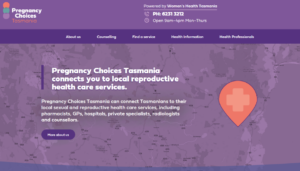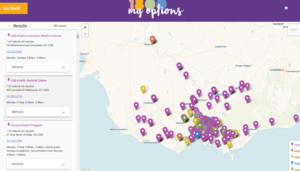Online Module
Reproductive Rights and Abortion - A brief overview
Before we jump into our training we would first like to acknowledge First Nation Australians whose land we reside and work on.
ALWAYS WAS, ALWAYS WILL BE ABORIGINAL LAND
Children by Choice acknowledge the traditional owners of country throughout Queensland and their continued connection to land and community. We recognise the two separate cultures of Aboriginal and Torres Strait Islander people.
Children by Choice recognises the dispossession of land and its ongoing effects on Aboriginal peoples today. We acknowledge the sorrow of the Stolen Generations and apologise for the removal of children by white Australians.

This pre-training module has been developed with the aim of supporting you in getting the most out of the workshops. The content is primarily reflective activity based and is designed to spark curiosity. All reflective activities are optional, and only need the time/effort that you have available.
It should take you around 15-20 minutes to complete, and can be done on a phone, tablet or laptop.
Overview of module
Learning outcomes
By the end of this introductory module we hope that you will have a basic understanding of the following
✦ Who Children by Choice is
✦ Underpinning theories of reproductive rights
✦ How this training relates to your professional and personal context
✦ The importance and impact of inclusive language
✦ Abortion access in Australia

Who is Children by Choice and what do they do?
Our History and Legacy
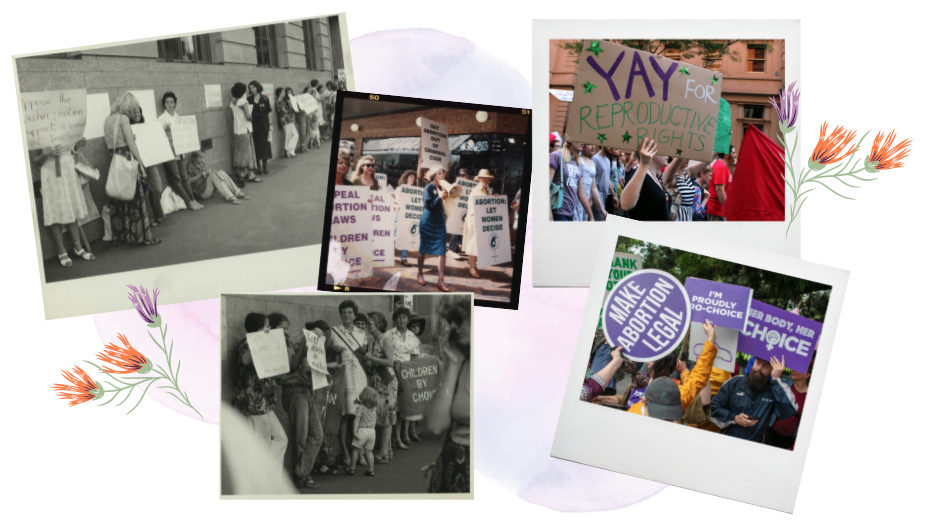
Children by Choice is a non-profit organisation, committed to providing evidence based information on all pregnancy options – abortion, adoption, alternative or kinship care and parenting. Our pregnancy options counselling, information and referral service is Queensland-wide.
Our education and training team operates across Australia, providing training on pregnancy options, reproductive coercion and abuse and post abortion practical skills training.
Children by Choice has been providing counselling, education and advocacy services for the last 50 years to people in Queensland.
Brief history of Children by Choice
For those interested below is a brief overview of Children by Choice over the last 50years.
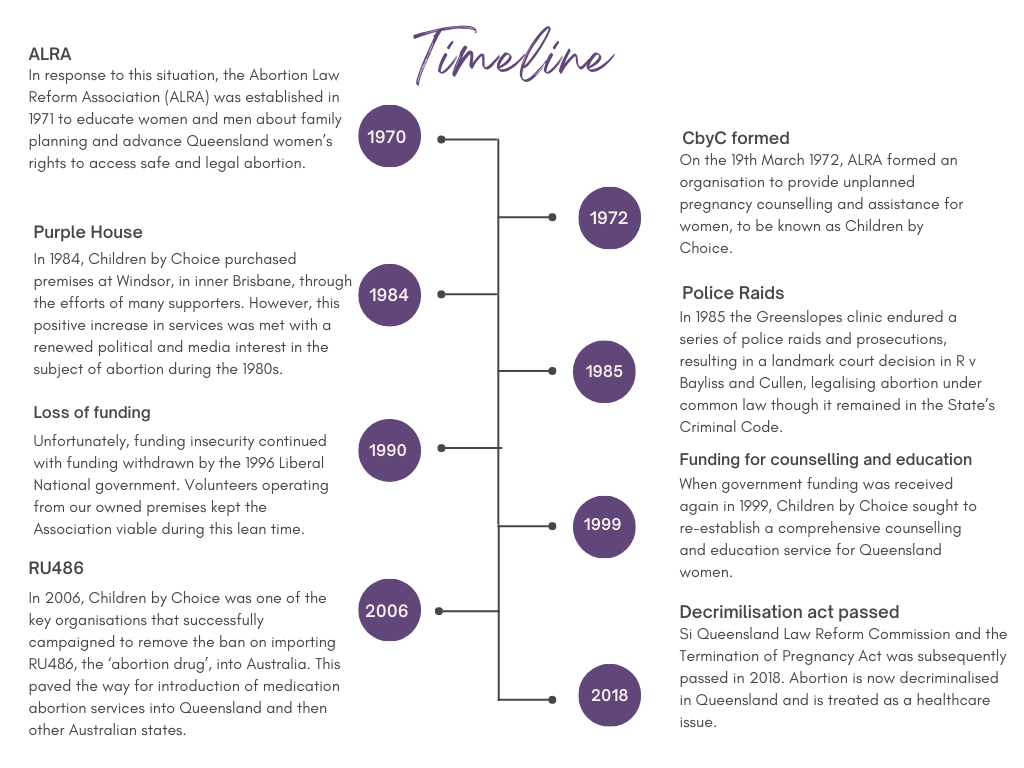
Our Mission is
To be leaders in advancing reproductive autonomy and access to compassionate abortion
Our Vision is for
People to freely and safely make their own reproductive and sexual health choices without barriers.
Our Values
We are:
- pro-choice
- collaborative
- compassionate
- feminist
- integrity
Our Areas of Impact
Counselling
Our counselling team;
✦ Provides evidence-based, non-directive pregnancy options counselling, support, information and referrals to women and pregnant people
✦ Post-abortion counselling and support &
✦ Liaisons with relevant medical, healthcare, domestic violence and sexual assault services.

Education
Our education team provide
✦ Professional development and training to organisations and health professionals
✦ Sexuality education workshops
✦ Project collaborations with intersectional groups
✦ Guest lectures for university students

Advocacy
Our advocacy work looks like;
✦ Supporting and promoting structural and legislative changes
✦ Developing and disseminating evidence-based, expert knowledge
✦ Contribute to academic and practice body of knowledge around pregnancy options and abortions



Key Theoretical Frameworks
Below you will find key theoretical theories which underpin the reproductive rights movement. Knowing these theories are important to understand the context in which much of the information, research and interventions have been conceived.
Feminism
Feminism has historically been known as a white women’s movement. Feminism today strives to be intersectional and inclusive, working towards dismantling oppressive power structures.
Intersectionality
Intersectionality is a concept that should underpin all forms of social justice, especially gendered violence. Historically feminism has excluded people due to not understanding intersectionality and how people can face multiple layers of oppression. We will talk more about intersectionality further on in this module.
Reproductive Justice (According to Sistersong)
The Herstory of Reproductive Justice (RJ)
Indigenous women, women of color, and trans* people have always fought for Reproductive Justice, but the term was invented in 1994. Right before attending the International Conference on Population and Development in Cairo, where the entire world agreed that the individual right to plan your own family must be central to global development, a group of black women gathered in Chicago in June of 1994. They recognized that the women’s rights movement, led by and representing middle class and wealthy white women, could not defend the needs of women of color and other marginalized women and trans* people. We needed to lead our own national movement to uplift the needs of the most marginalized women, families, and communities.
These women named themselves Women of African Descent for Reproductive Justice, and RJ was born. Rooted in the internationally-accepted human rights framework created by the United Nations, Reproductive Justice combines reproductive rights and social justice. The progenitors of RJ launched the movement by publishing a historic full-page statement with 800+ signatures in The Washington Post and Roll Call. Just three years later, in 1997, SisterSong was formed to create a national, multi-ethnic RJ movement.We believe that
Reproductive Justice is…
- A human right. RJ is based on the United Nations’ internationally-accepted Universal Declaration of Human Rights, a comprehensive body of law that details the rights of individuals and the responsibilities of government to protect those rights.
- About access, not choice. Mainstream movements have focused on keeping abortion legal as an individual choice. That is necessary, but not enough. Even when abortion is legal, many women of color cannot afford it, or cannot travel hundreds of miles to the nearest clinic. There is no choice where there is no access.
- Not just about abortion. Abortion access is critical, and women of color and other marginalized women also often have difficulty accessing: contraception, comprehensive sex education, STI prevention and care, alternative birth options, adequate prenatal and pregnancy care, domestic violence assistance, adequate wages to support our families, safe homes, and so much more.
Information sourced from
Taken from Sister Song Website – https://www.sistersong.net/reproductive-justice – accessed 7th Feb 2023


Abortion explained
Below you will find a number of videos that briefly explain pregnancy options, medical abortions (MTOP) and surgical abortions (STOP). The training will go further into these procedures.
What is an abortion
While this video is based in the US, the information at the start of the video about abortions and the different types of abortion is the same to an Australian context.
How does surgical abortion work?
How does medical abortion aka the abortion pill work?

Language Matters

"Language shows us that naming an experience doesn't give the experience more power, it gives us the power of understanding meaning"
Brene Brown
Language is important as it has the power to include and exclude people in a single word or sentence. Below you will find the Children by Choice language guide on terms we use and the reason behind why we use those terms. Language is always evolving and changing as it should as society learns more about what it means to be inclusive. At Children by Choice we are committed to reflecting on the language we use in order to be equitable, inclusive and accurate in the things we say, create and promote.
One area of change within the reproductive health space is the use of de-gendered language. This is because not all people who are pregnant are women, some are transgender, gender diverse and non binary folks. This change has occurred in order for our work to become more inclusive and not unintentionally exclusive.
Some Examples
Some examples of how language has changed
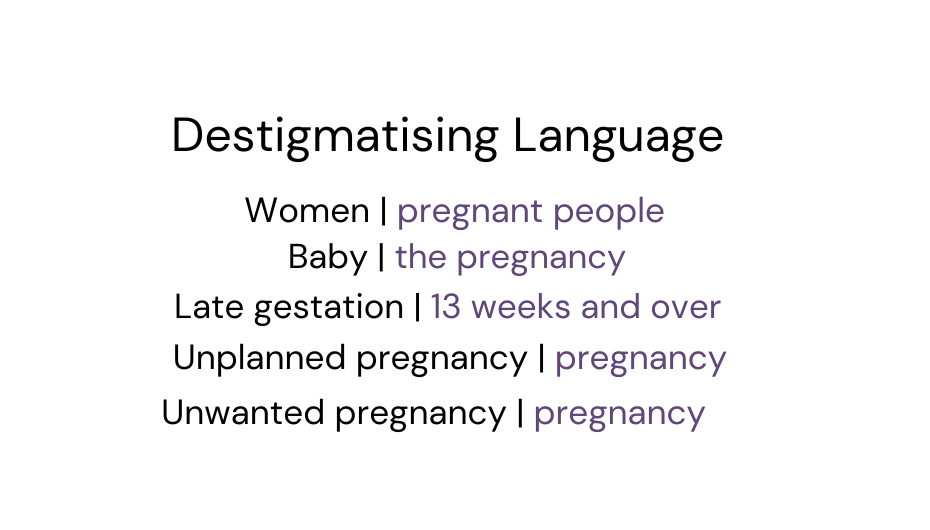
Some common terms
If you are new to the reproductive and sexual health space you may feel overwhelmed with the number of new acronyms you are exposed to. While we try and avoid acronyms we may slip up at times throughout the training. Below is a brief overview of some of the common acronyms you might hear or see used when referring to reproductive and sexual health.
- TOP- termination of pregnancy
- MTOP – Medication Termination of Pregnancy
- STOP- Surgical Termination of Pregnancy
- LARC- long-acting reversible contraception
- MS2Step- brand name of MTOP medication in Australia
- USS- ultrasound scans
- HHS – Hospital and Health Service
- CO/Conscientious Objection- Someone who chooses to not provide an abortion
- RCA – Reproductive Coercion and Abuse- range of perpetrator pregnancy-controlling behaviours including contraception sabotage and coercion towards a certain pregnancy outcome
While acronyms can be convenient, they can also be barriers to communication as not everyone will be aware of all the acronyms used. As much as possible, avoid using acronyms with clients. Use language that is simple and clear to elaborate upon jargon and lingo. We encourage you to speak up if there is language or acronyms used that you don’t understand.
Children by Choice Language Guide
Children by Choice has created a language guide that goes in-depth into de-stigmatising language.
Click below to download a copy of this for your reference
Language Guide 2022


When talking to clients it is important
To be Curiosity, Compassionate & Caring
 The less we assume, the more curious we can be about what is actually happening for the person in front of us.
The less we assume, the more curious we can be about what is actually happening for the person in front of us.
✦ Curiosity gives us a map to the support the client might need based on their circumstances and contexts
✦ Compassion gives us a map of how we can accompany the client in their journey
✦ Care is focusing on the needs that might arise for the client in their journey

Let’s see what this really looks like
Consider the statement below
"She got herself into an unplanned pregnancy because she did not use protection and now she is aborting at a late gestation because the father of her baby has told her that he does not want a child."
Now take a moment to consider these questions
✦ How did you feel while reading the sentence?
✦ What assumptions are being made?
✦ What more do you need to know to support this person?
✦ What would this sentence look like, destigmatised?

Key Terms and Acronyms
If you are new to the space of sexual and reproductive health you may not be familiar with the acronyms used within the space. While we aim to avoid the use of acronyms within our training we thought having a cheat sheet might also come in handy.
We recommend trying to avoid the use of acronyms as much as possible to ensure that communication is clear to whoever the audience is.

Common CbyC Acronyms (2)
273 KB

An Overview of Abortions in Australia
People with pregnancy capacity of all genders, ages, backgrounds, and religions have abortions.
Is Abortion Legal in Australia?

Abortion is legal and available on request till the gestations above
Abortion being legalised means that-
- there is no need to share reasons for wanting termination of pregnancy
- there is no need to view/hear ultrasound scans
- safe access zones are enforced
- counselling is NO longer mandatory
There are different legislations across Australia’s states and territories. Check out the link below if you would like more information.
Can a healthcare professional refuse abortion care?

Below is QLD specific information
Yes, but they need to meet certain obligations
✦ Declare their objection promptly
✦ Refer you to another provider or professional who is not a conscientious objector
The Termination of Pregnancy Act 2018 protects the right of healthcare professionals to object to providing abortion care services based on conscientious grounds.
This right comes with certain duty of care obligations- to promptly disclose the objection to abortions to the patient, and to provide appropriate and timely referrals to another provider who is not an objector.
No legal action can be taken against objecting healthcare professionals who do not follow their obligations but a complaint can be made to their professional association and/or the Health Ombudsman.
Legal doesn't always mean accessible
While abortion is legalised in Australia that does not mean that everyone has easy access to abortions, in fact for many people navigating the public pathways for an abortion can be really difficult. Children by Choice has launched a map for Qld which aim’s to point people in the right direction regarding the availability of abortions and contraception. Click on the link and see what is available in your area –Check out the Queensland-based map to find services near you
Our counselling service is Qld only, for interstate contacts please visit our website here.
If you have any questions or are struggling to find an abortion care provider near you or your clients, please give us a call at 1800 177 725

Abortion and Contraception Maps
Interactive Contraception and Abortion Maps Across Australia
QLD
Children by Choice – https://youtube.com/shorts/63K2RXGNlIg?feature=share
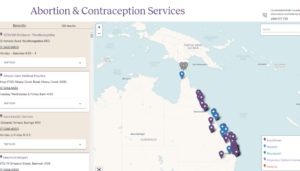

The Turnaway Study
The Turnaway Study is the first study to rigorously examine the effects of receiving versus being denied a wanted abortion on women/pregnant people and their children. Nearly 1,000 women seeking abortion from 30 facilities around the country participated. Researchers conducted interviews over 5 years and compared the trajectories of the women who received a wanted abortion to those who were turned away because they were past the facility’s gestational age limit.
This study found that the abortion itself was not harmful to their mental health outcomes when it was their choice. 95% of participants were confident about their pregnancy decision to terminate.
It was when participants were denied access that saw poorer mental health outcomes.


In considering the information above we encourage you to think about your personal, professional and organisational context
What do you think it means having personal, professional and organisational values and what do you think the differences are between them?
Personal – often comes from cultural, familial, religious, socio-economic/class influences
Professional – Guided by professional standards AASW, AAPRA. Informed by formal study and professional expectations. How do you want to act, behave and be known to colleagues, stakeholders and clients?
Organisational – What does my organisation value and require from me in regards to my behaviour/ beliefs?

Taking your professional context into account
Your Professional Context
CONSIDER:
How is pregnancy-options counselling and support linked with my role?
The reflective activity below is aim to help you reflect upon your practice context so that you are able to contextualise the workshop content as much as possible. Scroll through the questions below for reflective prompts.
Professional Context is the relationships which inform and are informed by certain standards, judgements, beliefs, assumptions, and values. Reflecting on these areas assists you to be able to further understand how this training relates to you within your context at work.
✦ What is my professional role?
✦ How much time and what resources do I have to support my clients?
✦ What information and guidance am I qualified to provide?
✦ Do I have all the information that my client would need to make an informed decision?
✦ Do I have appropriate referral knowledge?
✦ Is my organisational context going to impact or limit the information I can provide to my clients?
Taking your personal context into account
Take a moment to consider the parts of your identity which may be privileged. These questions often don’t have any easy answers, and that is okay. Asking them again and again helps us remember that they are important factors in ours and others’ life experiences
Understanding Privilege and Intersectionality
Intersectionality in practice, is the acknowledgment and consideration of the intersection of our identities, and how these identities are treated as either advantages (privilege) or disadvantages within different societies and groups.
There are different parts of you which make up human identity. These include ability, gender identity, sexual orientation, race, religion, and class among others.
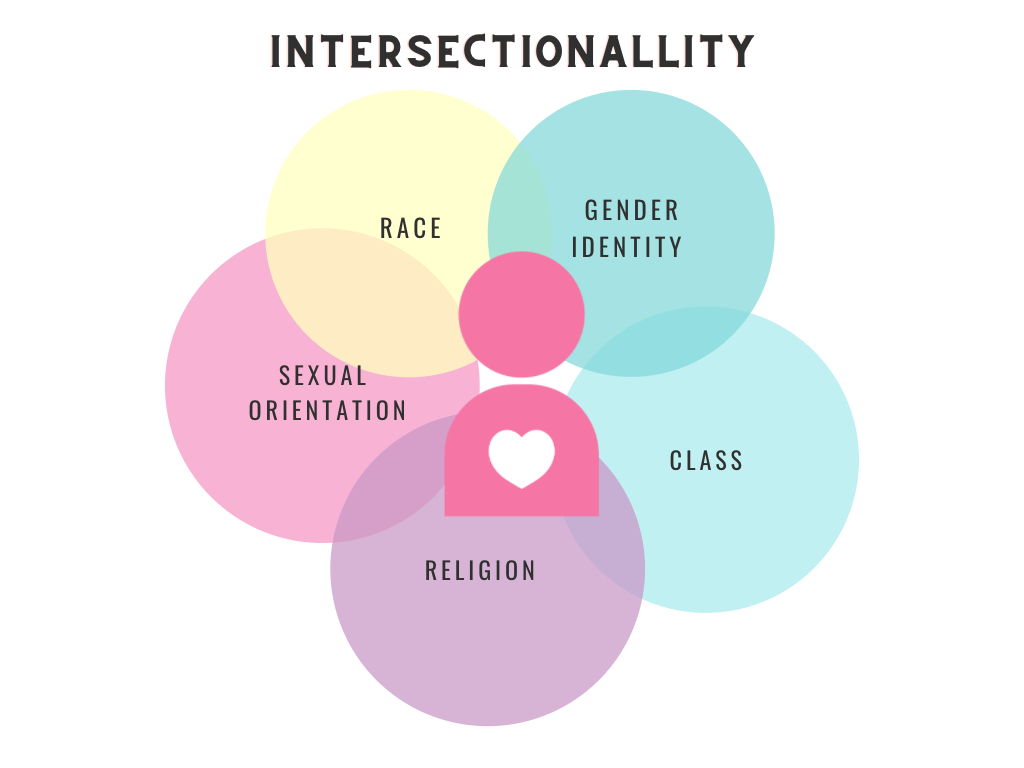
Here is an example of why acknowledging and considering the impacts of intersectionality are important.
Mary here is a woman of colour, lesbian, and has a physical disability.
Mary will not only face sexism within society because she is a woman, but she will also face ableism, racism, and homophobia due to the different parts of her identity.
Each of these identifying parts of Mary are not things that she chose, or “did” to herself. These additional barriers have nothing to do with anything that Mary has done.
However, Mary is part of a number of minority groups, each facing unique challenges to life, automatically, making life more challenging and meaning she faces additional challenges.
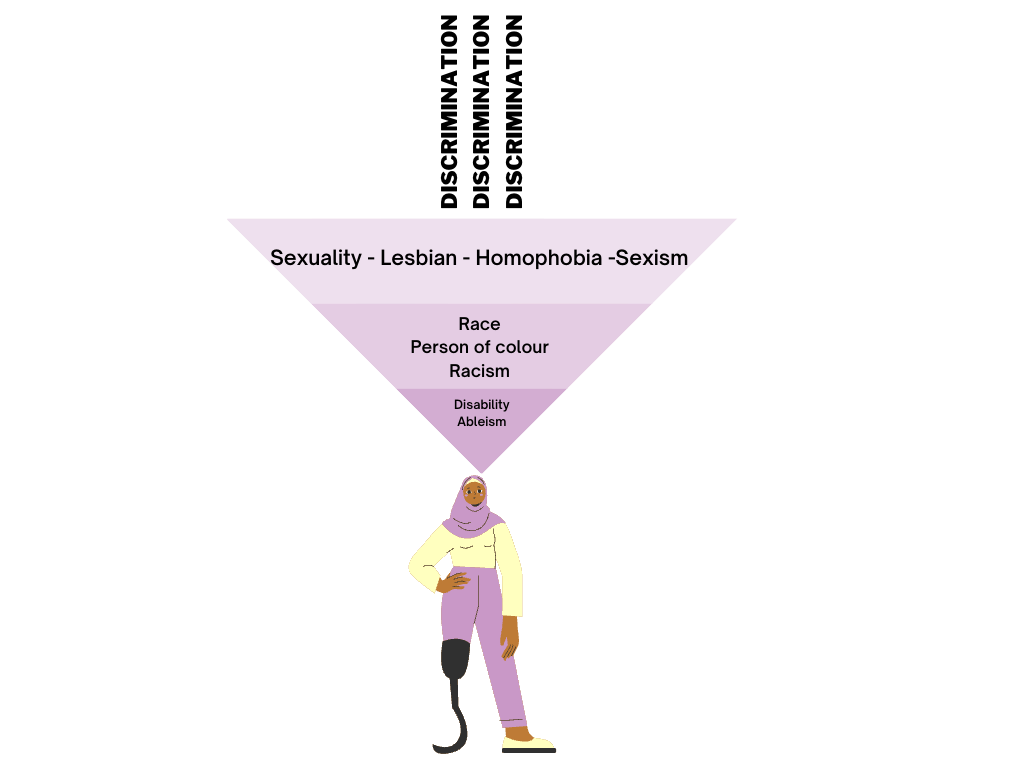
This is Paul. He is a white, straight, cis-gendered man. For Paul, the different parts of his identity are not seen with the same negative biases, stigma, or discrimination as Mary.
Paul won’t face sexism (as women or non-binary people do), or homophobia/transphobia, or racism due to the different parts of his identity he has been born into.
This automatically gives Paul a head start in life (regardless of environmental or social contexts), and has nothing to do with anything he has done or the choices he has made.
***This doesn’t mean that Paul doesn’t face hardships, it means that his race, sexuality, and gender don’t contribute any additional hardships***
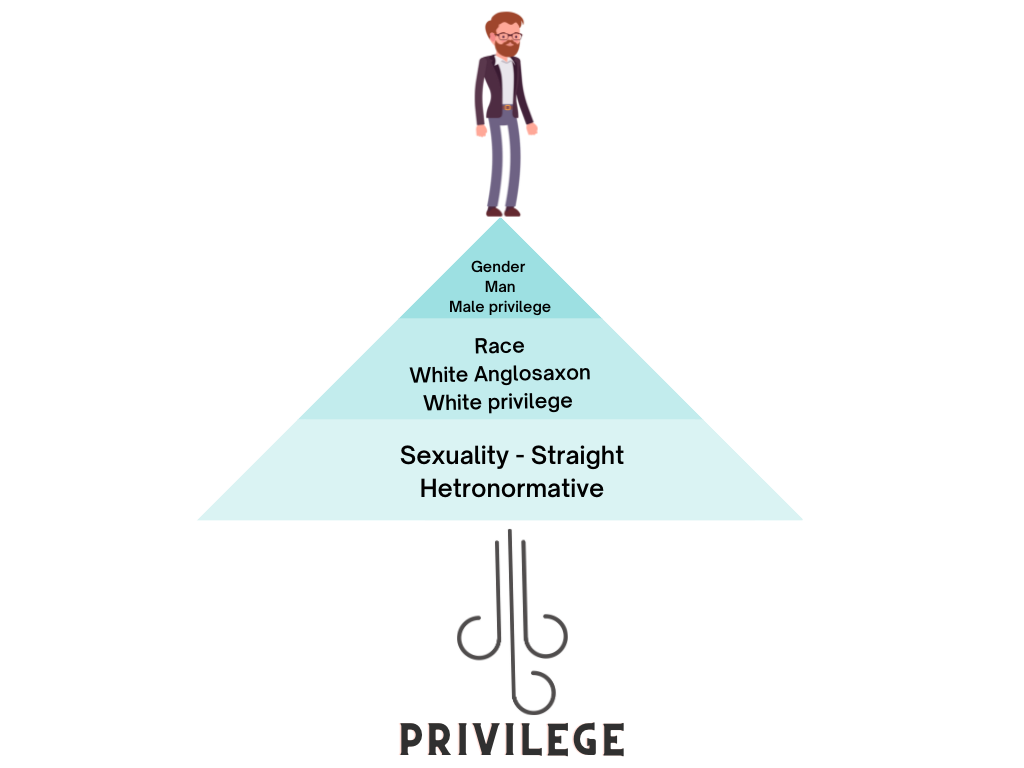
✦ Which of these privileges have you gained by settling on stolen land?
✦ Are there ways in which those privileges impact other people’s opportunities?
✦ What action can you take today to acknowledge your privilege and use your power to address the balance?
✦ How might these and other power dynamics be affecting you clients' circumstances and experiences?

You have made it to the end of this brief introduction to reproductive rights and abortion!
We hope this has been interesting and has spiked your interest and some questions for our upcoming training. Remember this is just a taste of some concepts we will go into further in the training.
If you have any questions, concerns or queries about your upcoming training, or have feedback about this introductory module please email us at [email protected]


